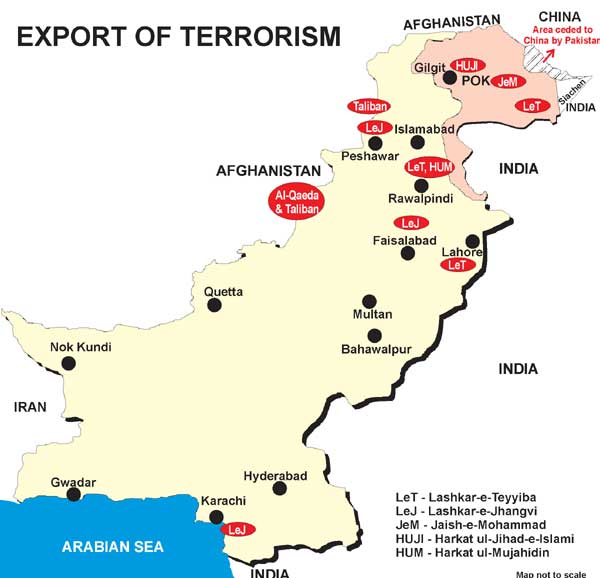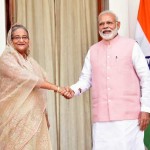IDR Blog
Terrorism and Pakistan: A Compulsion or Dilemma
Pakistan is in a state of flux as far as terrorism is concerned, the seeds of poison it sowed in decades of eighties and nineties are now beginning to yield crops of devastation.
Pakistan in a bid to wage proxy wars against India and Afghanistan encouraged, financed, trained and helped in crossing over of terrorists will now have to come up against these elements only as they are a force to reckon with in that country.
ISI gets massive economic aid from Saudi Arabia, America, China and drugs smuggling to finance these terror operations on its soil.
Pakistan with help of USA and Saudi Arabia invited Haqqani operatives to create and train Taliban to fight Russians in Afghanistan and also coupled LeT and JeM terrorists to create war like situations in Kashmir.
In a bid to understand this problem one has to do a quick study of prevailing Socio-Economic situations in Pakistan. Nearly 40% of population is moderate in their views, are having progressive outlook and are mere spectators.
This includes bulk of upper class and upper middle class of population like educated people, intelligentsia, moderate clerics, beaurocracy etc. Nearly 40% are slightly orthodox but do not side with terrorism or extremism of Jehad.
This population includes middle class and to some extent lower middle class also. Remainder 20% which lives in abject poverty is the main hunting ground for recruitment for terrorists. To reach out to this group other than personal visits, Lords of terror try the trusted Masjid, Madarasa and Jehad route. Indoctrination, brain-washing and economic support to their families start at very young age of terrorists.
…the dilemma of Pak Armed forces is that they cannot take head –on Indian Armed Forces and have to resort to proxy war only.
Role of Pakistan Army and ISI
ISI gets massive economic aid from Saudi Arabia, America, China and drugs smuggling to finance these terror operations on its soil. Extremist Masjids and Madarsas are financed either directly or through the terror lords, selection, indoctrination and brain washing is the task of terror schools and their lords. Training, arms, ammunition and equipment are provided by Pak army and ISI. Selection of targets or venue is also done by ISI.
By breeding and exporting terror Pakistan was getting isolated in worlds eyes, recent developments have indicated sudden and subtle change in Pakistan’s attitude. This subtle change in attitude is being objected to by Pak terror lords. In nearly a decade other than creating scare, terrorism has not been able to create a dent in India’s Army or Armed forces. On the other hand they have created adverse image of Pakistan as cradle of terrorism but the dilemma of Pak Armed forces is that they cannot take head –on Indian Armed Forces and have to resort to proxy war only.
This dilemma is a cause of worry for foreign policy makers of Pakistan. Middle-East and Arab world are in turmoil over terrorism, internal situation in Pakistan is also not very satisfactory, Baluchistan, Gilgit and Baltistan, Pakhtunistan, Region of NWFP and recently in POK, there have been visible uprisings.
There have been fratricidal bombings of mosques, bomb blasts in civil as well as military areas and a general sense of unsafe feeling in the masses. Civil elected government is in terrific pressure from America and other countries to reign –in and stop terrorism on its soil.
With ever increasing number of terrorists on its soil the chances of internal strife and armed clashes and civil war also increases for Pakistan.
Dilemma and compulsion of Pak ISI and Army are thus increasing day by day. Within their own country terrorists want the society to revert back to medieval days.
The orthodox and bigot elements want Shariat and other outdated laws to be promulgated whereas the progressive and modern elements want a moderate and progressive society.
World is now in 21st century and progressing in social, economic and political spheres whereas terrorism wants to push it back to middle age. With ever increasing number of terrorists on its soil the chances of internal strife and armed clashes and civil war also increases for Pakistan.
Many times Pak army has tried and now realized that Military Junta can not rule for a long time and its own allies would like to have an elected government in Pakistan. Though Pak army and ISI still call the shots they have to listen to civil elected government under US pressure. Changing scenario where India made their intentions of having peaceful relations amply clear has put pressure on Pakistan.
The much practiced and hyped Pathankot attack also failed to give desired effect. It is matter of time that India also takes retaliatory action against terror.
It would be safe to conclude that with worlds changing attitude towards terrorism, growing power of India, hardening of USA attitude towards terrorism, emergence of Iran as a power and removal of sanctions and increasing economic co-operation are some deterrence for terrorism in Pakistan.
The much practiced and hyped Pathankot attack also failed to give desired effect. It is matter of time that India also takes retaliatory action against terror.
Since Pak ISI and army have to indulge in proxy wars with India and Afghanistan they have to indulge in terror attacks only as in the past they have tried Wars with devastating effect on their armed forces and country.
Pakistan ISI and Army is thus caught in a quagmire of compulsion and dilemma over terrorism. They are truly between Devil and Deep Sea as to what to do with hordes of trained and armed terrorists, how to save face with increasing US pressure yet continue with proxy war.
Post your Comment
2 thoughts on “Terrorism and Pakistan: A Compulsion or Dilemma”
 Loading Comments
Loading Comments





Indo-Pak relationship is all about fireworks and noise generated, with hardly any sustainable effect. In case the two countries could easily put in place a water sharing agreement, a precious commodity for both the nations. This could have triggered many a wars, but there has been neither any diplomatic fight nor any arbitration in the international courts over water.
It seems both Pakistan and India have realised the need to normalise relations. Both countries have accorded high priority to terrorism and is unwilling to engage on other issues, especially Kashmir. Kashmir, it appears to have been placed on the back-burner as Pakistan realises that their policies on Kashmir have realised next to nothing, despite all the wars.
Terrorism has cost Pakistan heavily and now they realise a need to move away from it and develop economically and socially. Pakistan realises that they cannot compete with India and the only way out is to cooperate with India, make use of the opportunities India offer and move ahead.
The moves by Pakistan government (Army and Civil) after the Pathankot attack is commendable. It shows that they have now reached a stage that they can no longer sustain terrorism and support their non-state actors, till now considered a national asset. This change in stance could be due to the global isolation Pakistan is facing and also the reluctance of China to go ahead with the CPEC proposal until militancy is cleared. The Pakistan government has to also deal with the religious fundamentalists. These elements are the ones fueling militancy and also blocking social and economic developments.
The above can only be achieved in Pakistan by a civilian government fully supported by the Army. Today, they both appear to be on a same page regarding militancy and religious fundamentalism. The trial of the perpetuators of the Pathankot and Mumbai attack will prove their intent in the times to come.
Compulsion or dilemma well analysed. Though a complex subject yet it has been explained in great proportions keeping narative small . Looking forward to more on the subject in greater details.